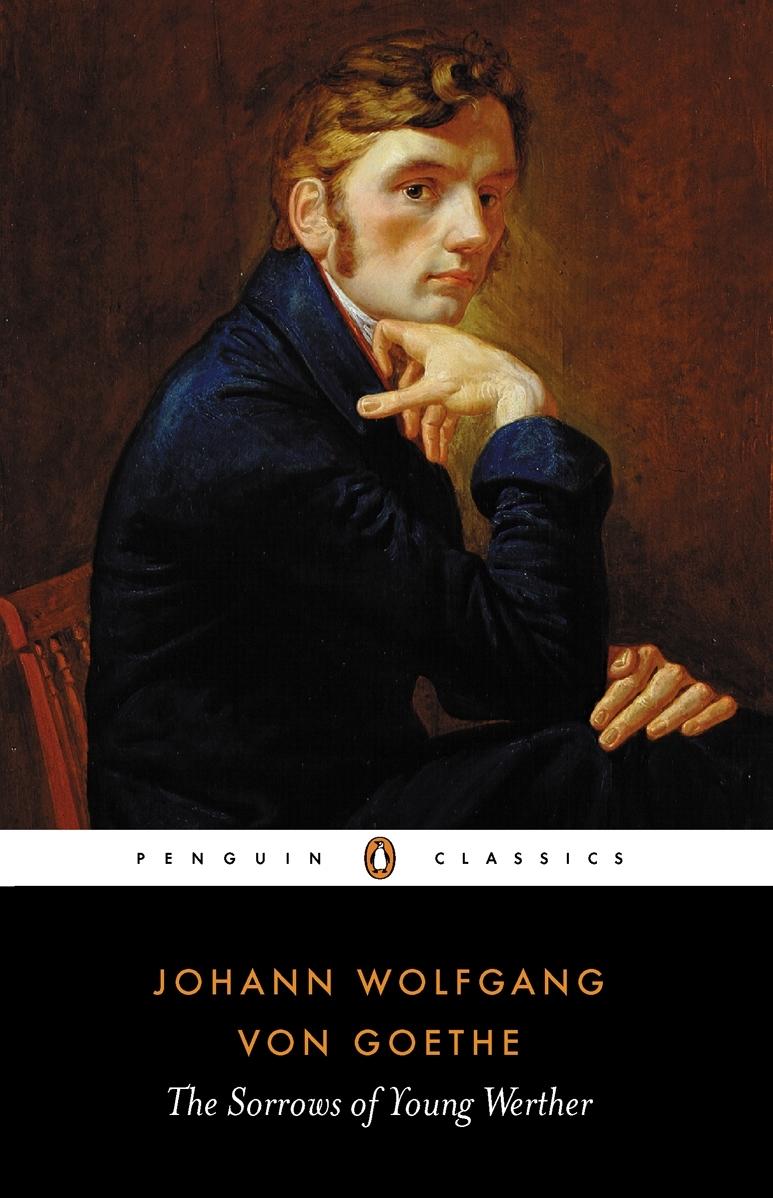The Sorrows of Young Werther is a book written in 1774 by Johann Wolfgang von Goethe. Inspired by Goethe's own troubles with romance in his own youth, the novel is a epistolary tale of unrequited love between the titular character Werther and his love interest, a young girl named Lotte. Charted through a collection of letters sent from Werther to a confidant, we learn more about Werther's problems. Werther himself is an interesting protagonist, sensitive and passionate; a slave to his emotions. Werther falls in love with a young girl named Lotte, who quickly becomes Werther's object of intense desire. Lotte, however, is engaged to another man, an older gentleman named Albert, and this engagement brings Werther nothing but misery. Unable to keep a just-friends relationship with Lotte and after many rebuttals, Werther shoots himself in the head with a pistol, ending the book in a dramatic, melancholic note.
The book was part of the Sturm Un Drang movement in Germany, seen as a precursor to the romantic movement. Similar to the Romantic movement, Sturm Un Drang came out as a reaction against 18th century Enlightenment ideals, and put a heavy emphasis on Nature, Emotion, and Human Individualism. It drew from the writings of the philosopher Rousseau, who believed humans had a natural state, and that through faith and the experiences of the senses we could approach this state. The movement took many inspirations from other literary works, in particular James Macpherson's Ossian, who Werther reads to Lotte in the book. Goethe in his youth himself was considered one of the principal leaders of this movement. The Sorrows of Young Werther is considered a key text, due to it's depiction of the extremes of emotion to the rejection of rationality.
Werther became a smash hit in Europe on it's release, and became somewhat of a cultural smash hit. It's depiction of emotion over rationality proved to be a big hit with audiences of the time. Werther's attire, yellow trousers and a waistcoat with a blue jacket, became a fashionable style of attire to fans of his work. Allegedly, due to the relatable nature of Werther's suffering, the book also inspired a series of copycat suicides by men who found themselves in similar positions to Werther. Whether the book posed a reasonable danger or not, this aspect it's reception was heavily sensationalized in the press of the time, leading the book to be banned in countries like Italy and Denmark.
Goethe's work became an inspiration for a lot of the literature of the romantic period, inspiring a lot of the writers of the time. Werther's sensitivity and agony provided a well of inspiration for romantic period authors who became interested in portraying the sensibilities of emotion in their literature. In particular, Mary Shelley reference the book in her novel, Frankenstein. Frankenstein's monster reads Werther and relates with the character's emotional suffering. This is subverted by having the monster act outwardly on his suffering, murdering those who have caused him such miserable suffering.
Booth, Jim. “A Few Words about the Sorrows of Young Werther.” Progressive Culture | Scholars & Rogues, 19 Apr. 2020, https://scholarsandrogues.com/2017/06/04/a-few-words-about-the-sorrows-….
“Sturm Und Drang.” Encyclopædia Britannica, Encyclopædia Britannica, Inc., https://www.britannica.com/event/Sturm-und-Drang.


